This is the second review in the series of the beautifully designed Sigma E-Mount lenses. This review will focus on the 35MM Sigmacron; the 50MM review can be found here.
I’ve nicknamed this line of lenses the Sigmacrons because of their F2 aperture, all-metal construction, knurled aperture and focus rings, and the classic design that give it that Leica lens look and feel. When you place these Sigmacrons next to a Leica lens, it’s hard not to assume that’s exactly where Sigma got its inspiration from.
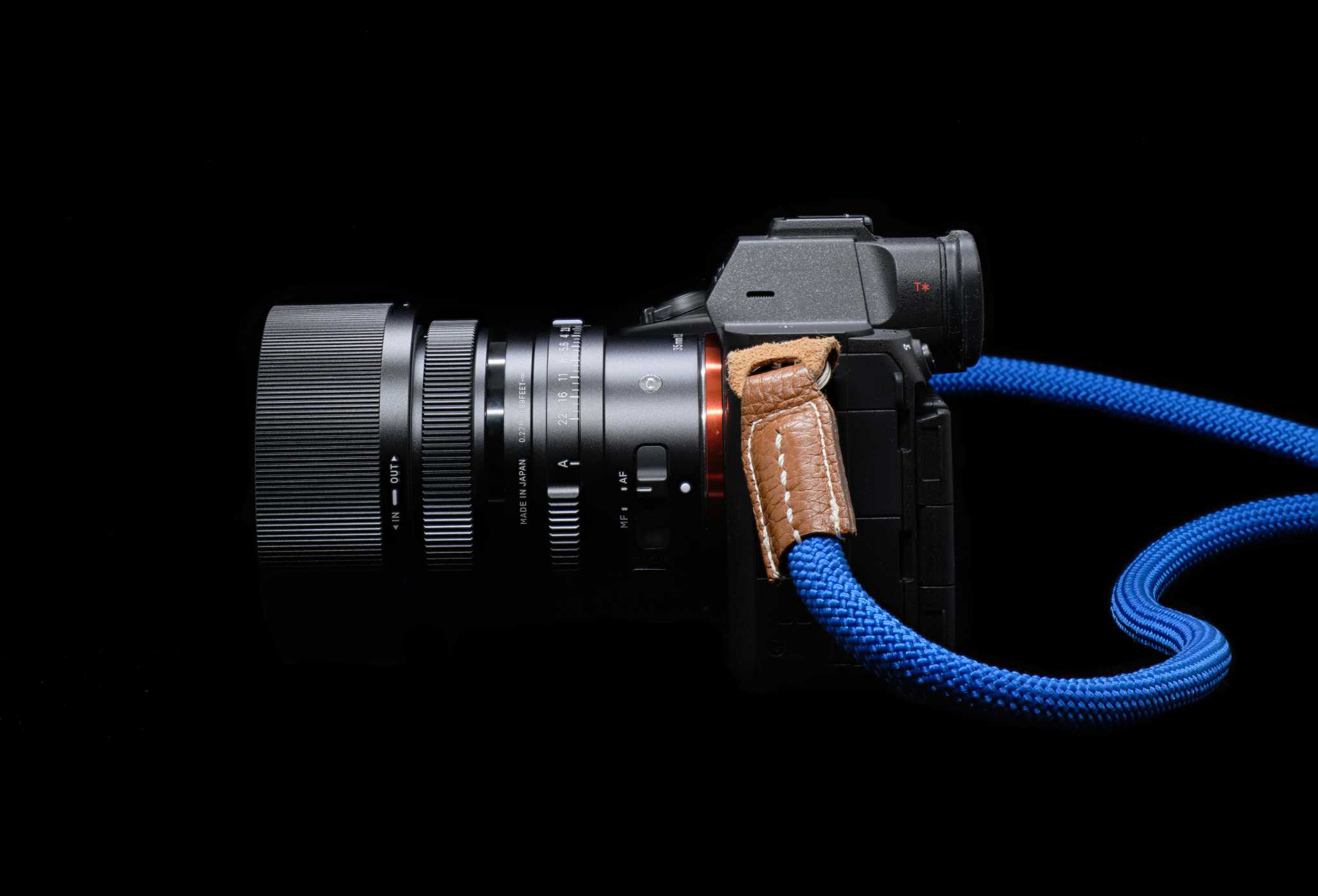
This lens serves as a reminder that proper testing of gear requires real and significant use before making a judgement call. My first impressions on this lens were quite negative as its flaws became apparent from first use. However, with time, as I used the lens more and more, I began to understand the rationale for why Sigma made those compromises.
Disclaimer: Both lenses were purchased at full retail price from JD.com in Mainland China. Neither Sigma, nor JD has provided any incentive to write this review. Neither have been provided a preview of the review.
Please note the images shown in this review were chosen for their variety rather than for artistic value.
Build quality
As with its 50MM Sigmacron sibling, this is where this lens really shines. It’s brilliantly built with a cohesive design from top to bottom. It feels like a lens that will last a lifetime. The all-metal construction, including the beautiful metal lens hood, is a joy to behold. It really does look and feel like a Leica or Voigtlander lens. The perfectly weighted aperture ring has the ideal amount of resistance and click when moving through the aperture range.
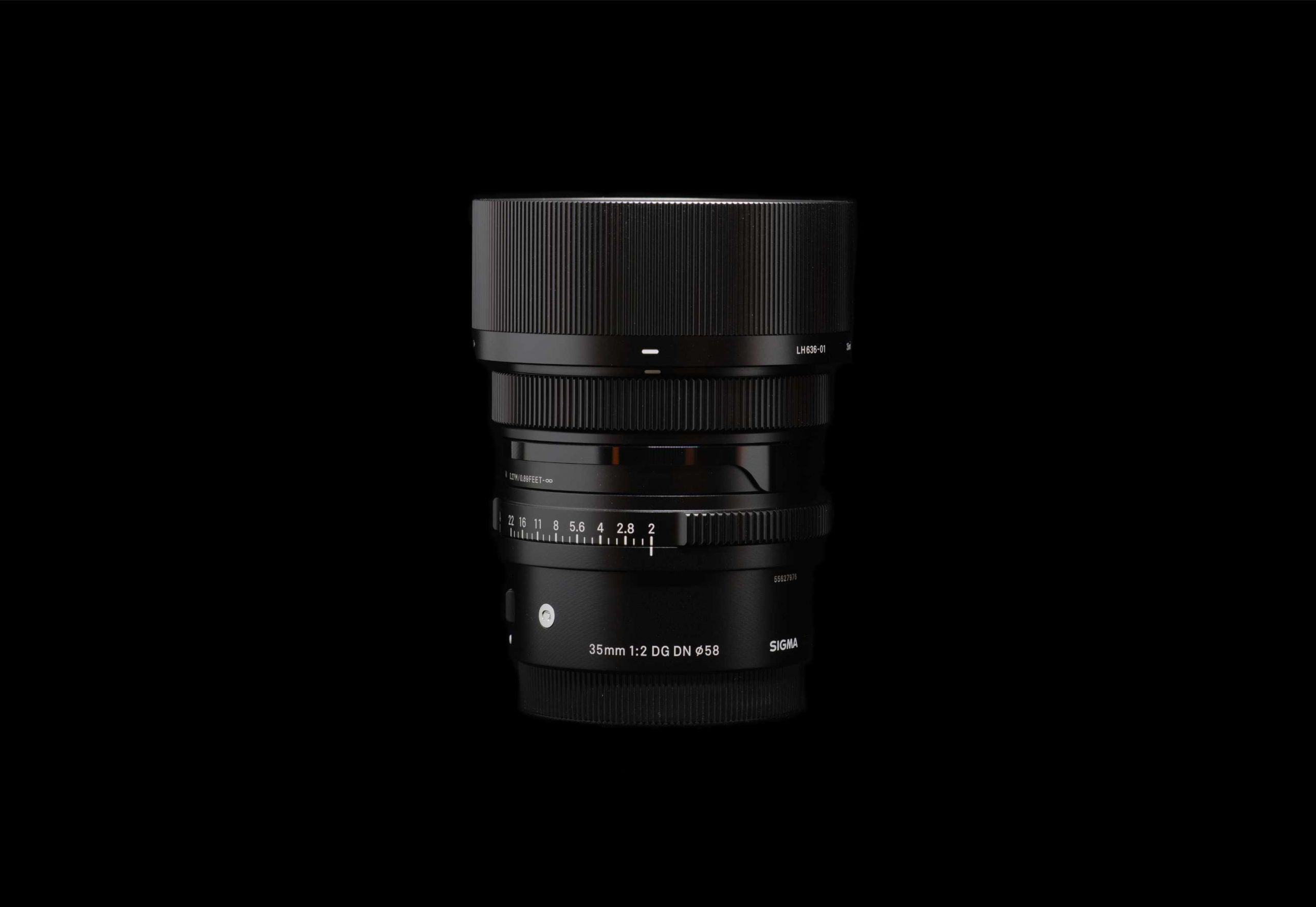
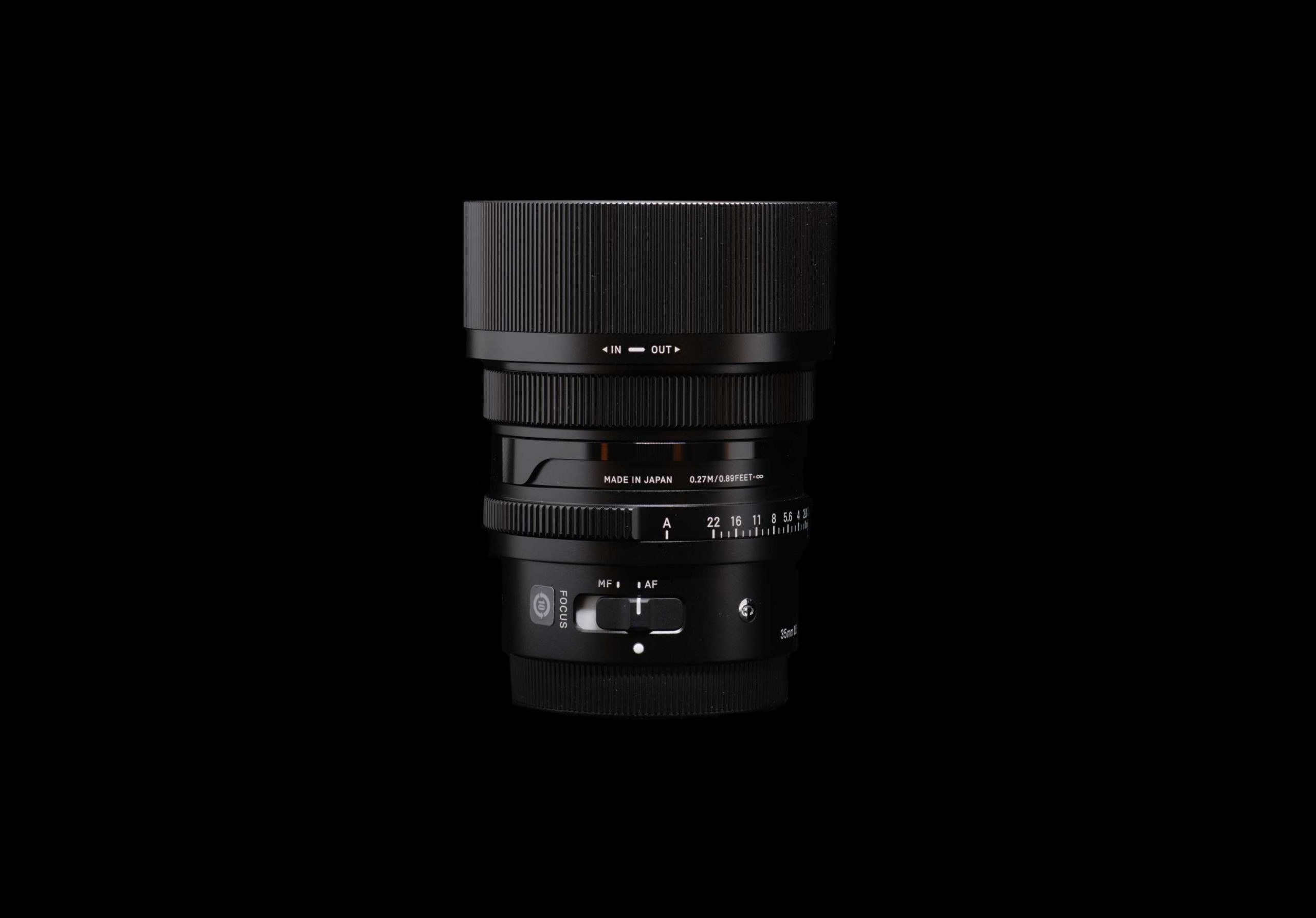
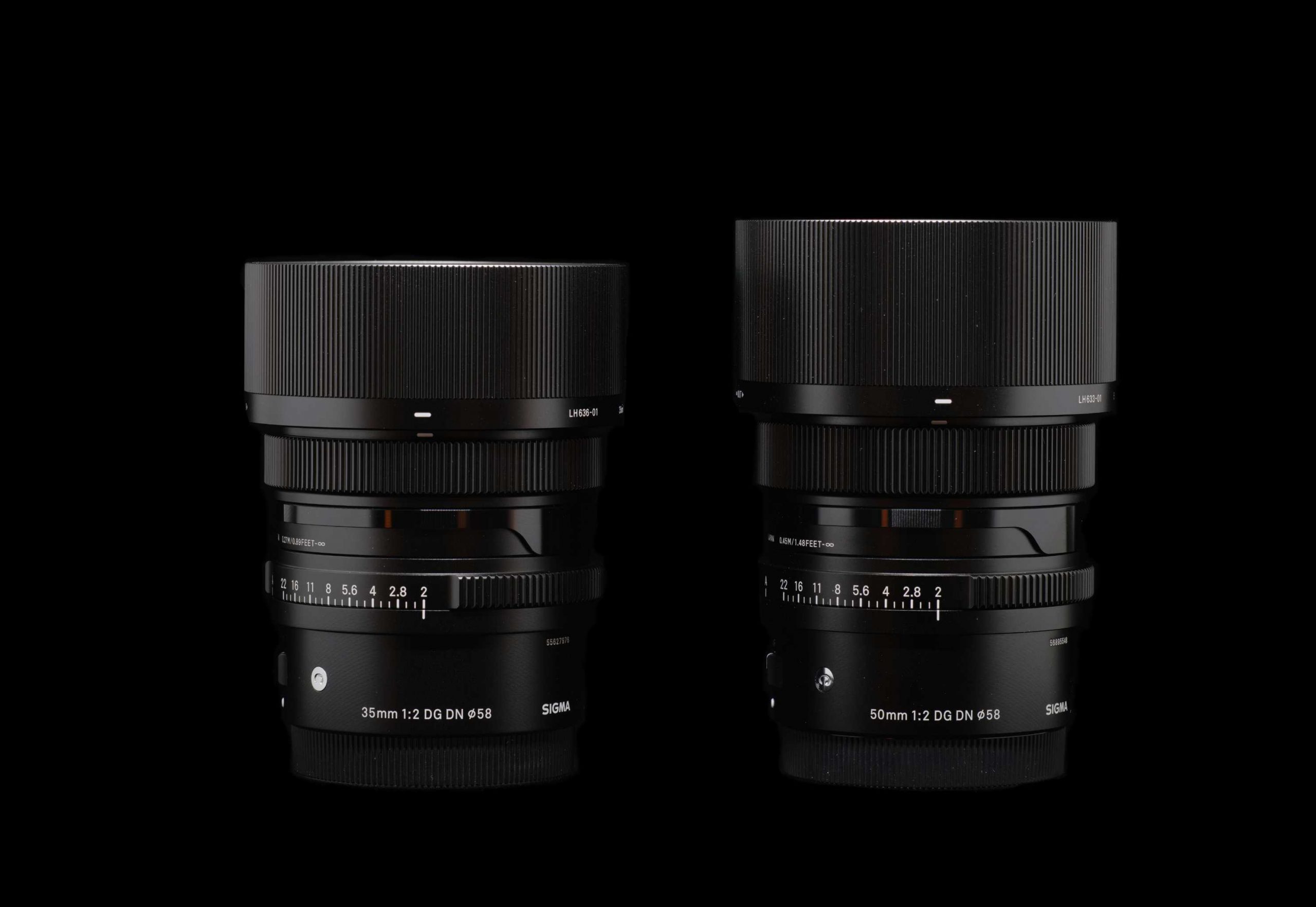
There’s a density to the lens that feels like a lot has been packed into its small dimensions. Everything feels intentional and built to tight tolerances. I appreciate the consistency Sigma has brought to this line of lenses. Fujifilm and Leica have a singular design language to their lenses, but they often have very different feel at the human touch-points such as the aperture and focus rings. Sigma has been able to engineer the exact same feel to this line of lenses, which exudes a very high level of design and quality control tolerances.
As with the 50MM Sigmacron, the only one negative is the way the metal lens hood attaches; it has a vague engagement point to start threading the lens hood on. It also has higher friction than expected; I wonder if the friction will reduce over time given its metal build construction. However, I should note there’s a decent click as the hood reaches its final destination.

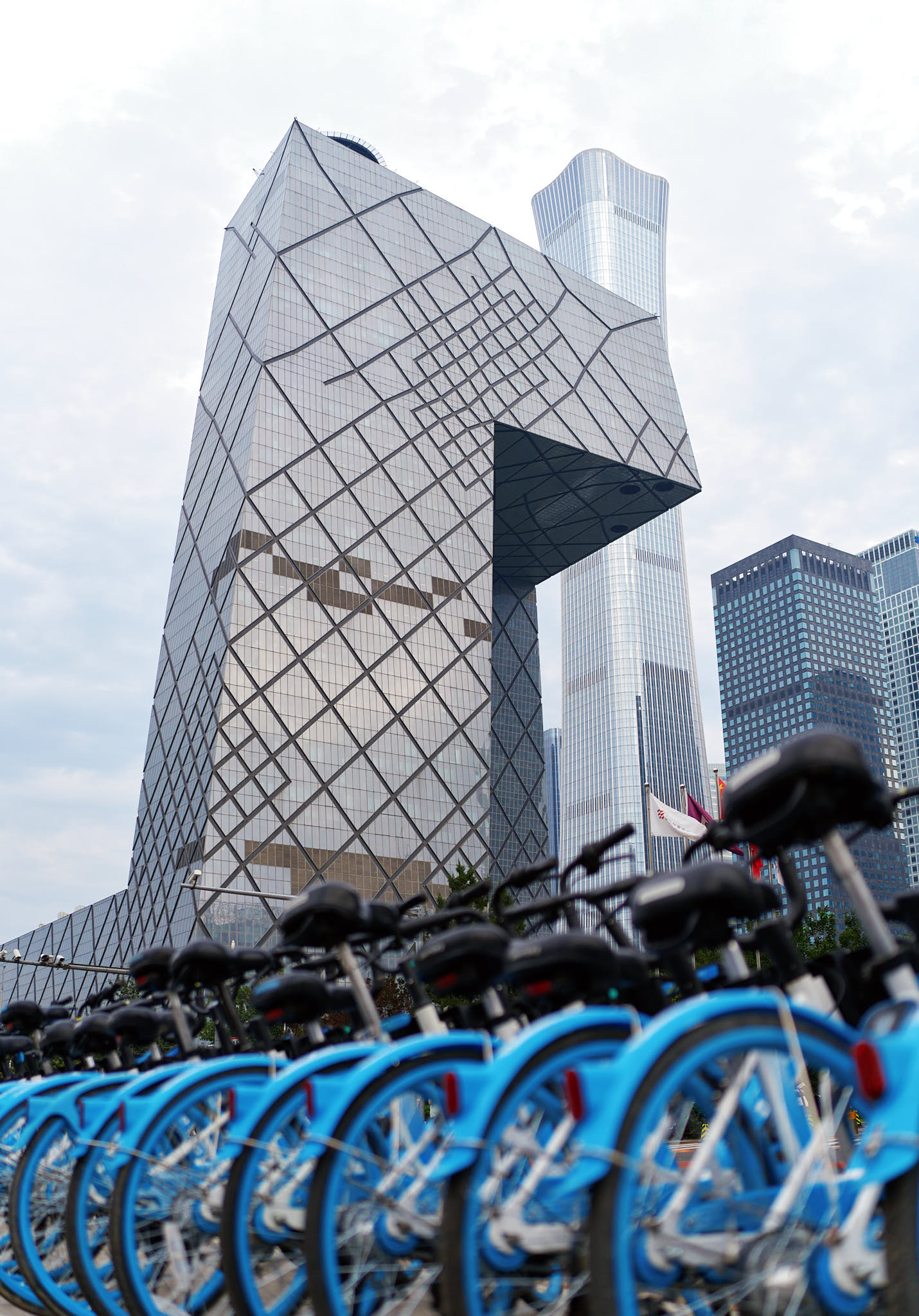
There’s also something cool in that Sigma provides two lens caps with each lens. One is the typical plastic style lens cap that you pinch to put into place. As with all Sigma lenses, the pinch cap is of high quality and stays nicely in place without any play.
Sigma also provides a magnetic cap that leverages the metal build and reminds you of the lens’ unique construction. The magnetic cap is easy to use when the lens hood is off, but when on, it’s tough to remove; there isn’t enough space around the cap to get a finger under there with the hood in place.
The focus ring has a good amount of resistance. I much prefer the 35MM Sigmacron’s focus ring over the overly sensitive one on my Sony 35MM G-Master lens. It’s very easy to manually focus in both still image and video modes.


The 35MM Sigmacron is a beautifully designed and crafted lens. With the exception of the vague initial contact between the lens and lens hood, the overall build quality is excellent and gives the impression that this lens is built to last. It harkens back to the olden days of lens design while having all of the modern conveniences.
Size and weight
The 35MM Sigmacron is very small. It’s the kind of lens that you can easily throw into a bag or even a large pocket (it would look hideous to have this lens in your pocket but it’s possible). It’s only 70mm (diameter) x 67mm (length) and weighs 325g. With the lens hood removed, it’s especially small and looks more like an APSC lens.
The smaller size does seem to come at a price, with the corners being soft wide open. This is contrary to its 50MM sibling which demonstrated sharp corners, even wide open. On my Sony A7R5, the lens is so light and easy to operate with one hand; on the shoulder, it feels like I’m barely carrying anything.


Sigma achieved the perfect balance with the size and weight of the 35MM and 50MM lenses in this series. They’re usefully smaller than the Sony GM lens, while at the same time having some heft with the metal construction that gives them that premium quality feel. I’ve had both the 35MM and 50MM Sigmacrons glued to my camera since I got the lenses.
Contrast and Resolution
To quantify the image quality, we turn to our test charts taken with the 61MP Sony A7R5. Two comparisons of the centre and the corners are provided, at 100% and 200% magnification. It’s easier to discern the differences at 200%, however keep in mind that would not be a typical use case as a print magnified to 200% would be 160cm x 107cm (63” x 42”) at 150 DPI.
Starting with the centre, we can see that it’s already very good at F2, becomes excellent at F4 and peaks at F4 to F8. It starts to become softer at F11 as diffraction comes into play, and by F16, it’s noticeably softer. With high resolution 36mmx24mm sensors where the pixel aperture is relatively small, I would always avoid F16 anyhow, and only use F11 in a pinch.
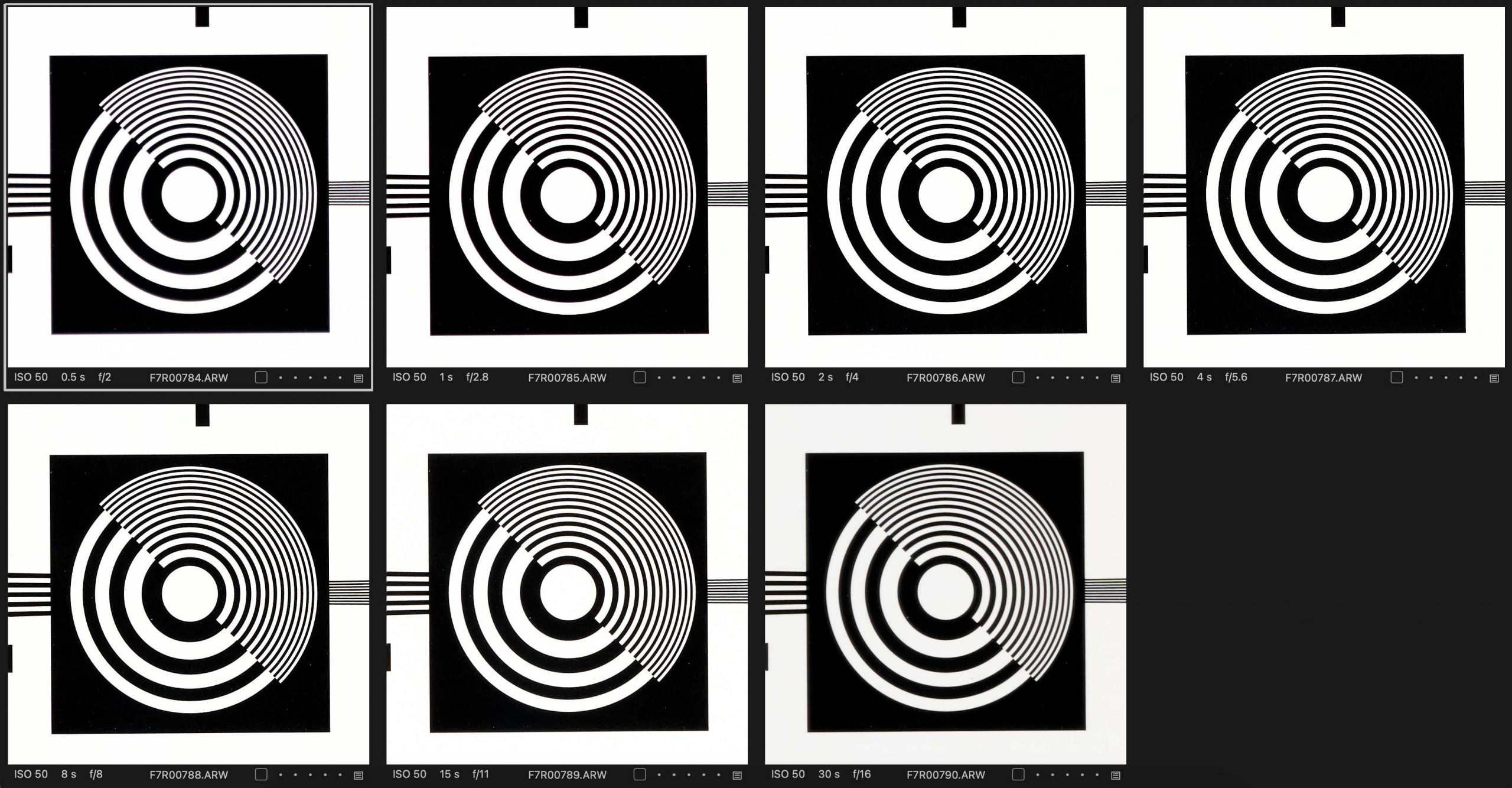
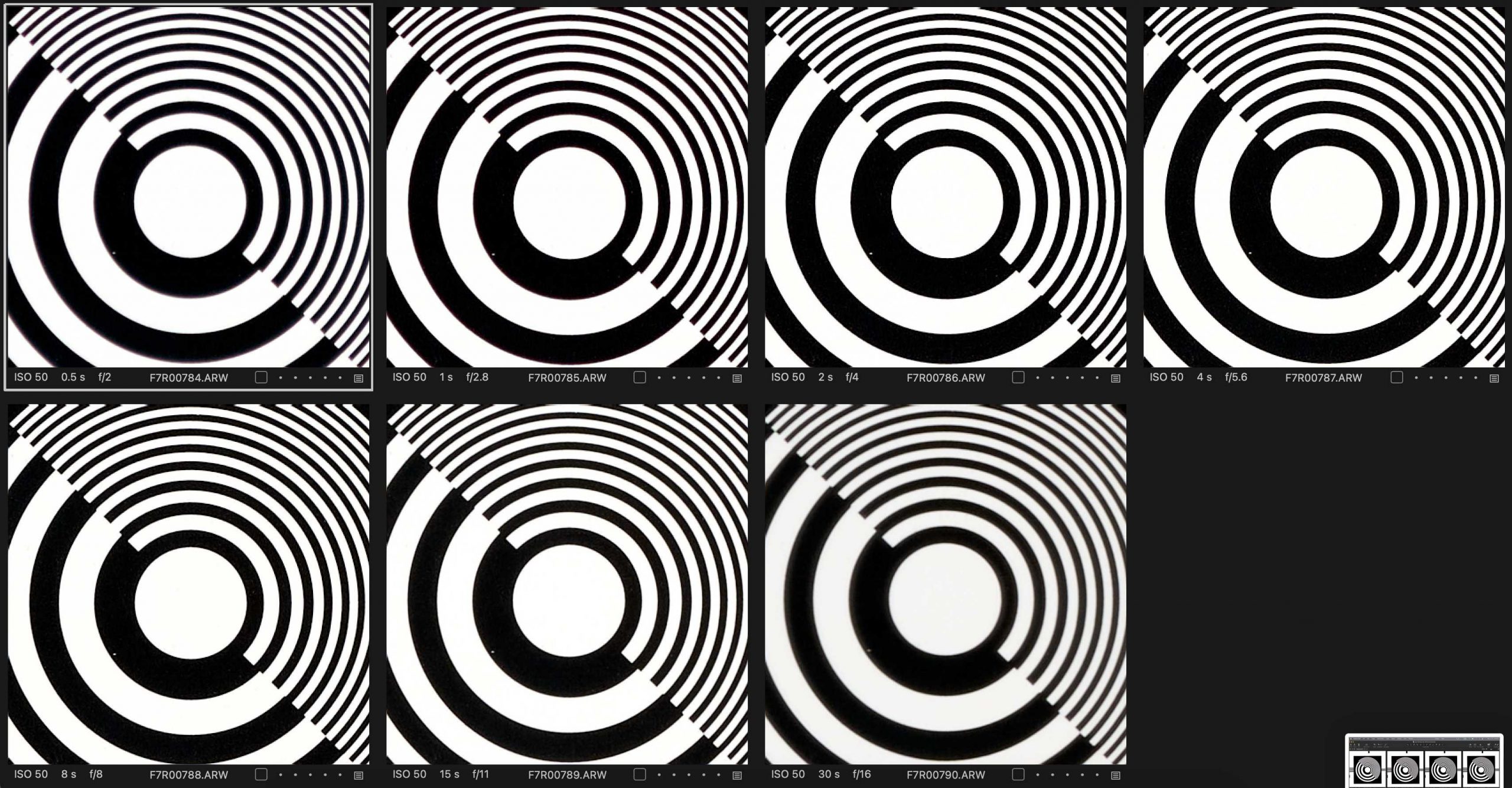
In the corners, there’s softness at F2, noticeable even at 100%. When I first got the lens, the very first image I took showed this characteristic; it almost made me return the lens. It doesn’t fully sharpen up until F5.6 and peaks in the corner at F8. At F11, it starts to soften due to diffraction and by F16, there’s a noticeable drop in sharpness.
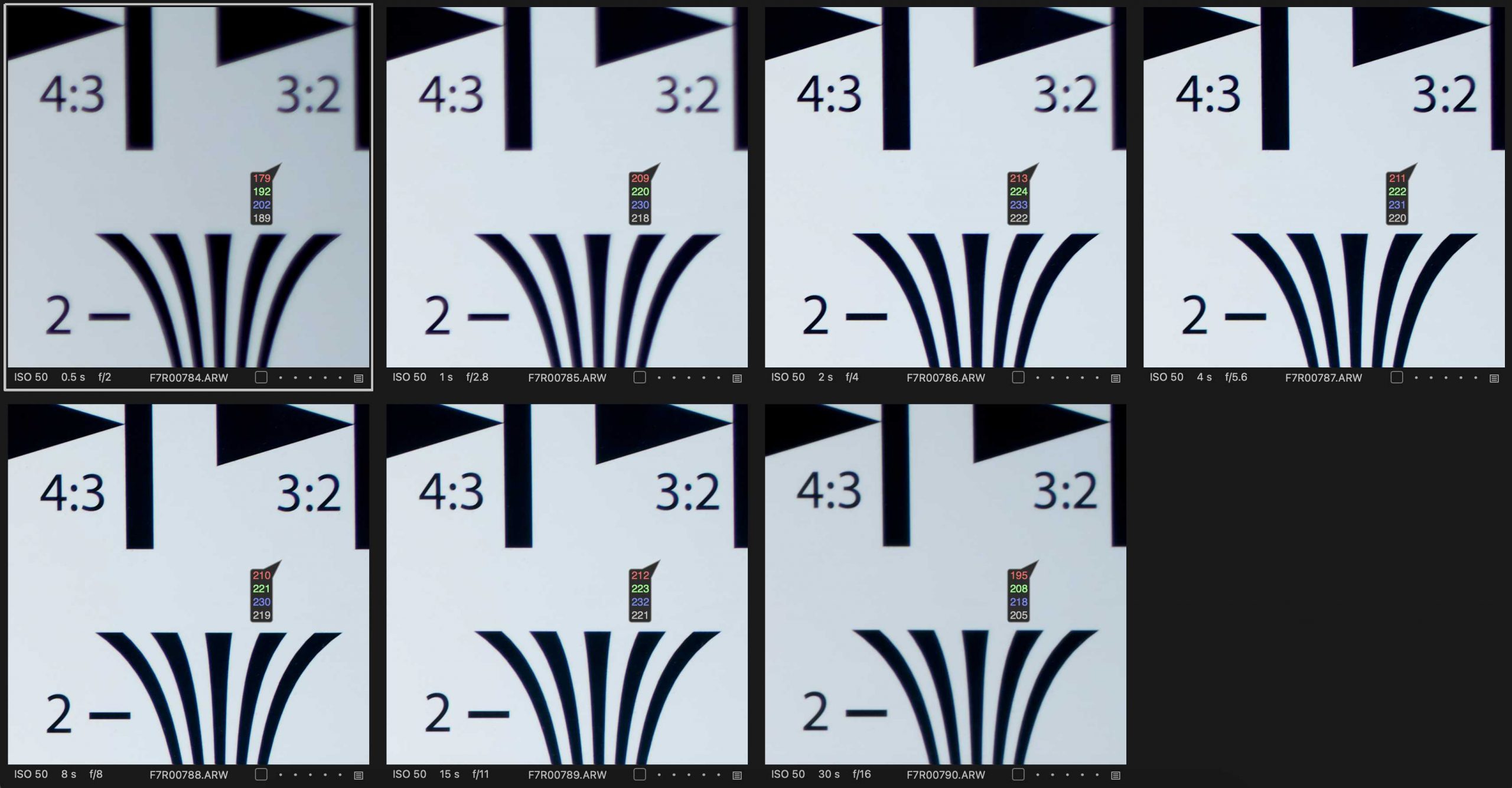
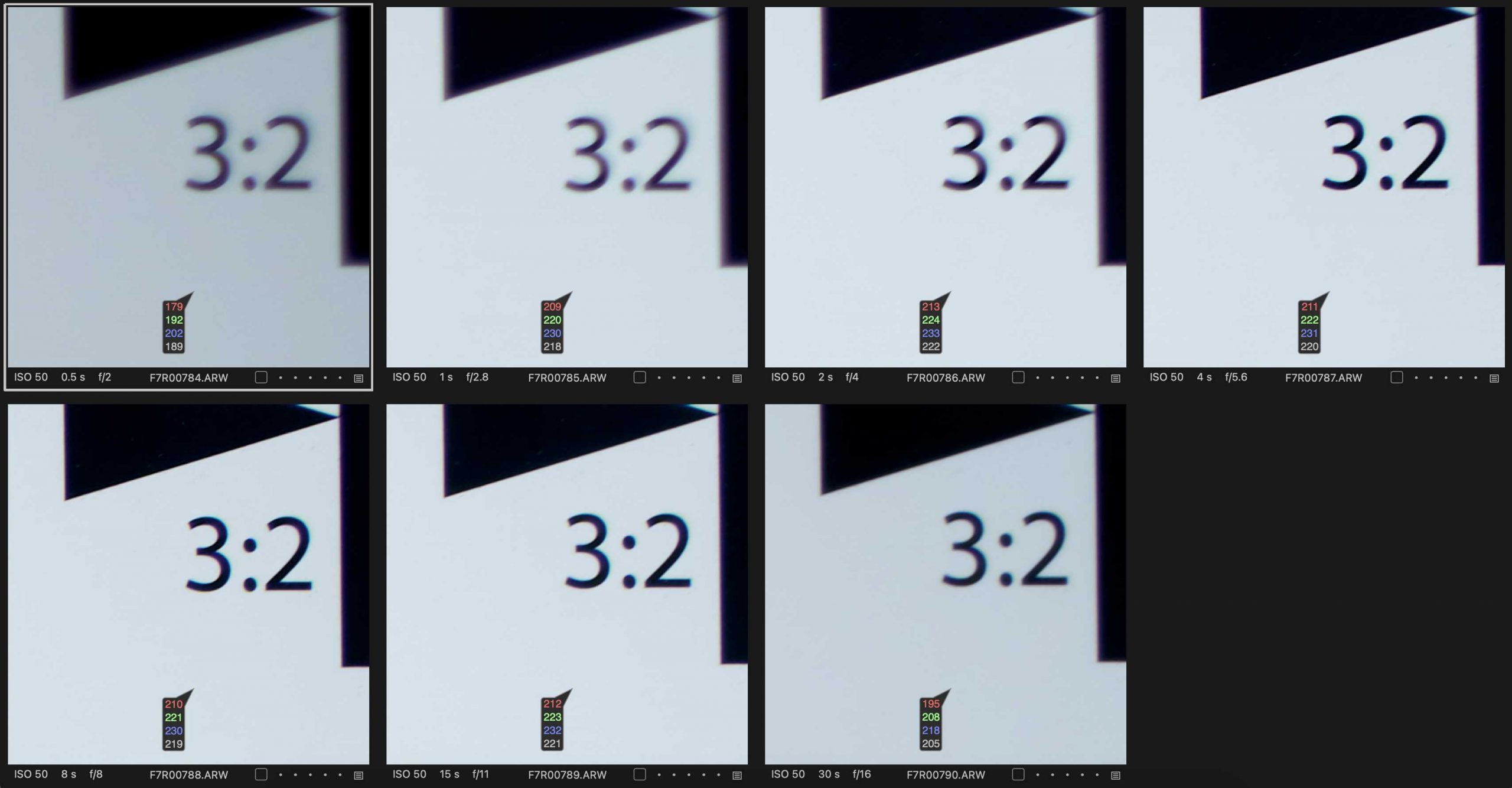
When we look at infinity distance, the same behaviour is apparent with the corners a bit soft wide open. It sharpens up by F5.6 and peaks between F5.6 and F8. At F16, the corners get pretty soft due to diffraction. Using a real life subject, the corners at infinity look better than the test chart did at closer distances.
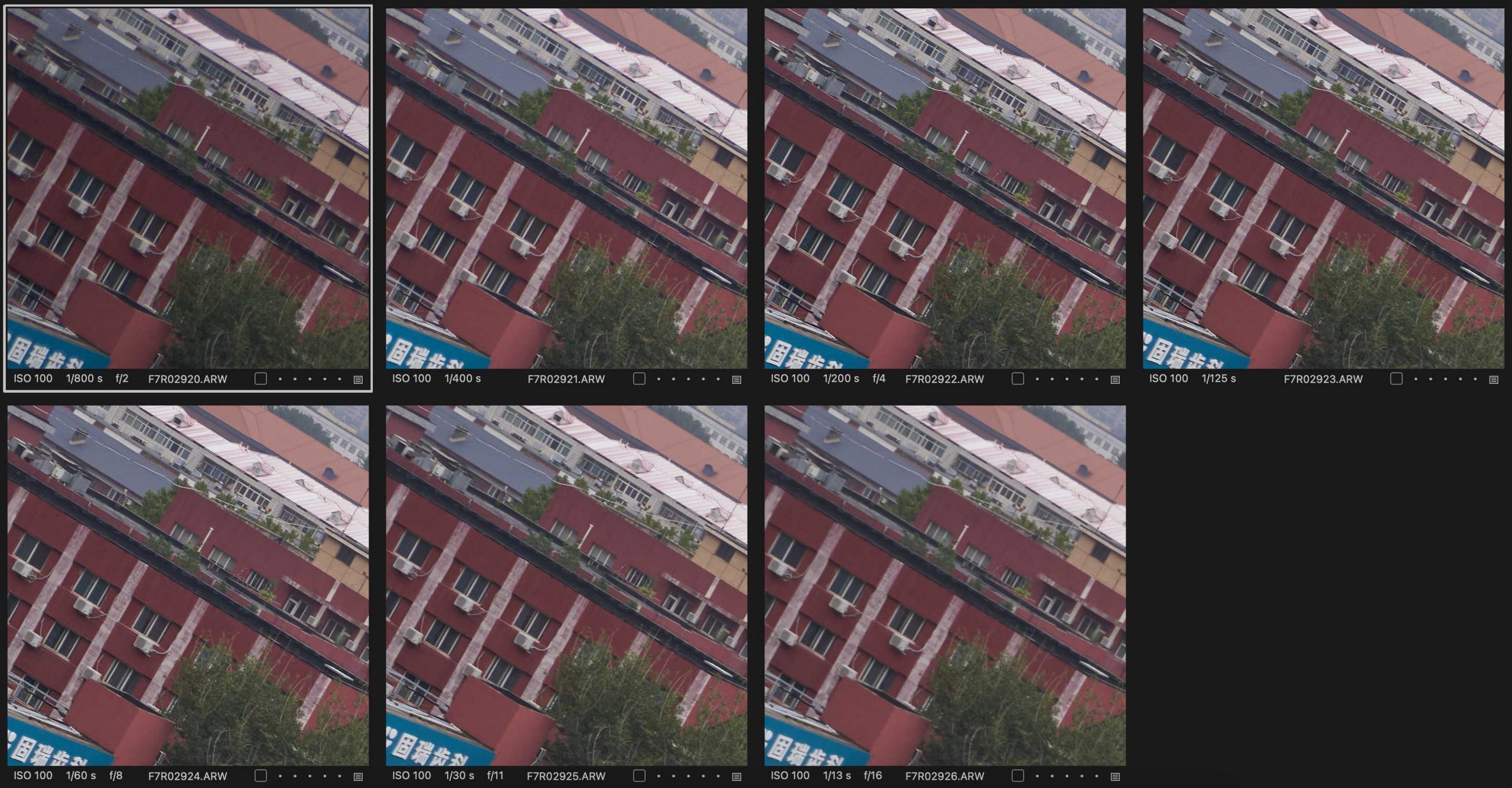
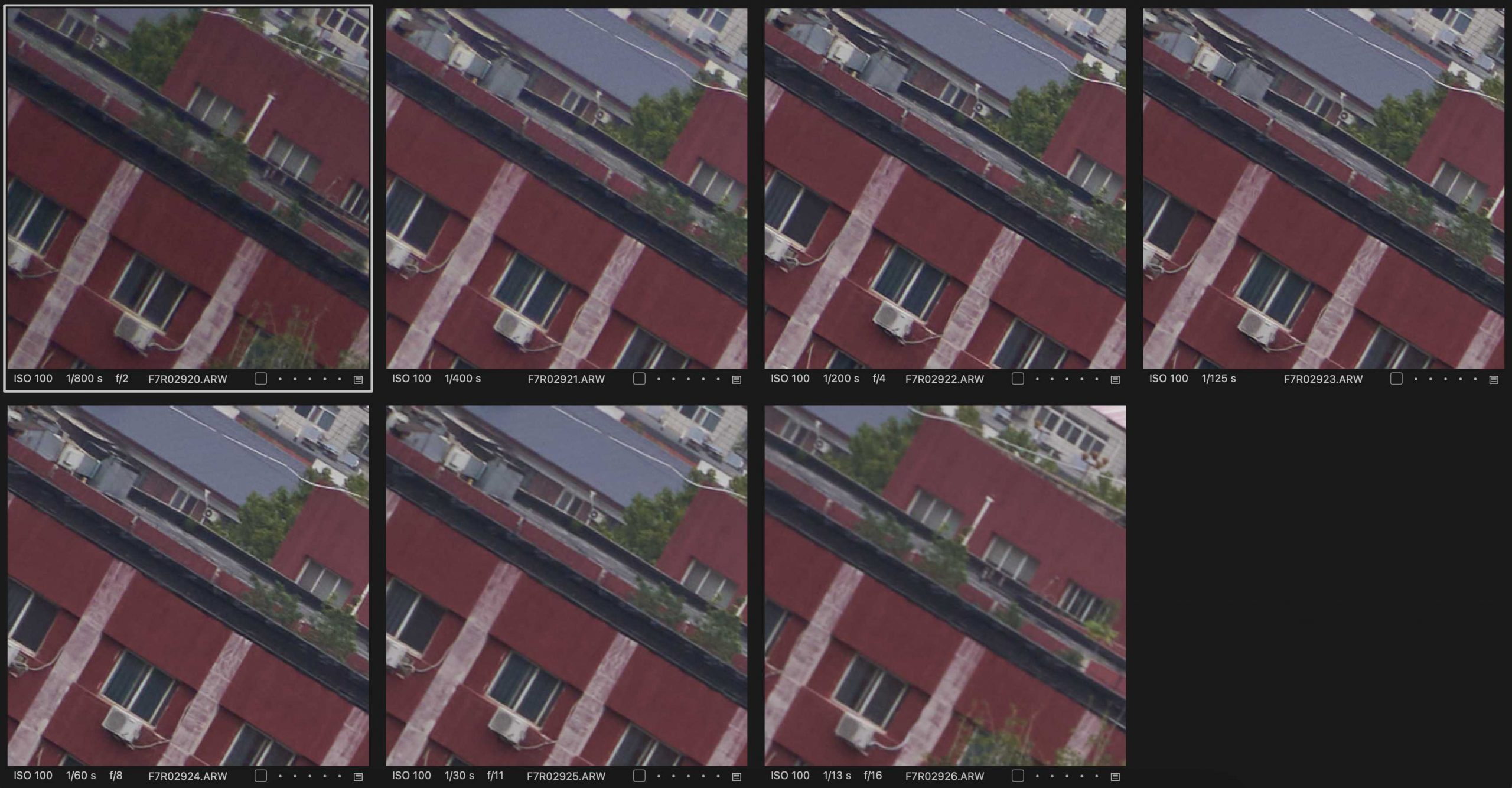
Distortion & Aberrations
Given its small dimensions, just like the 50MM Sigmacron, we can see fairly obvious purple fringing in the corners between F2 and F5.6. This is corrected in Capture One by using the “Chromatic Aberration” setting under the Lens Correction panel. With the correction on, the fringing is hardly noticeable even when viewed at 100%.


At the Minimum Focus Distance (MFD), the lens is a bit soft at F2. To get tack sharp images at MFD, it requires stopping down to F5.6 or F8. At F2, there’s some green fringing across the image at high contrast edges, including the centre. It gradually improves until F5.6 where it’s no longer visible. Because it’s barely visible at MFD, turning “Chromatic Aberration” on in Capture One Pro doesn’t make much difference.
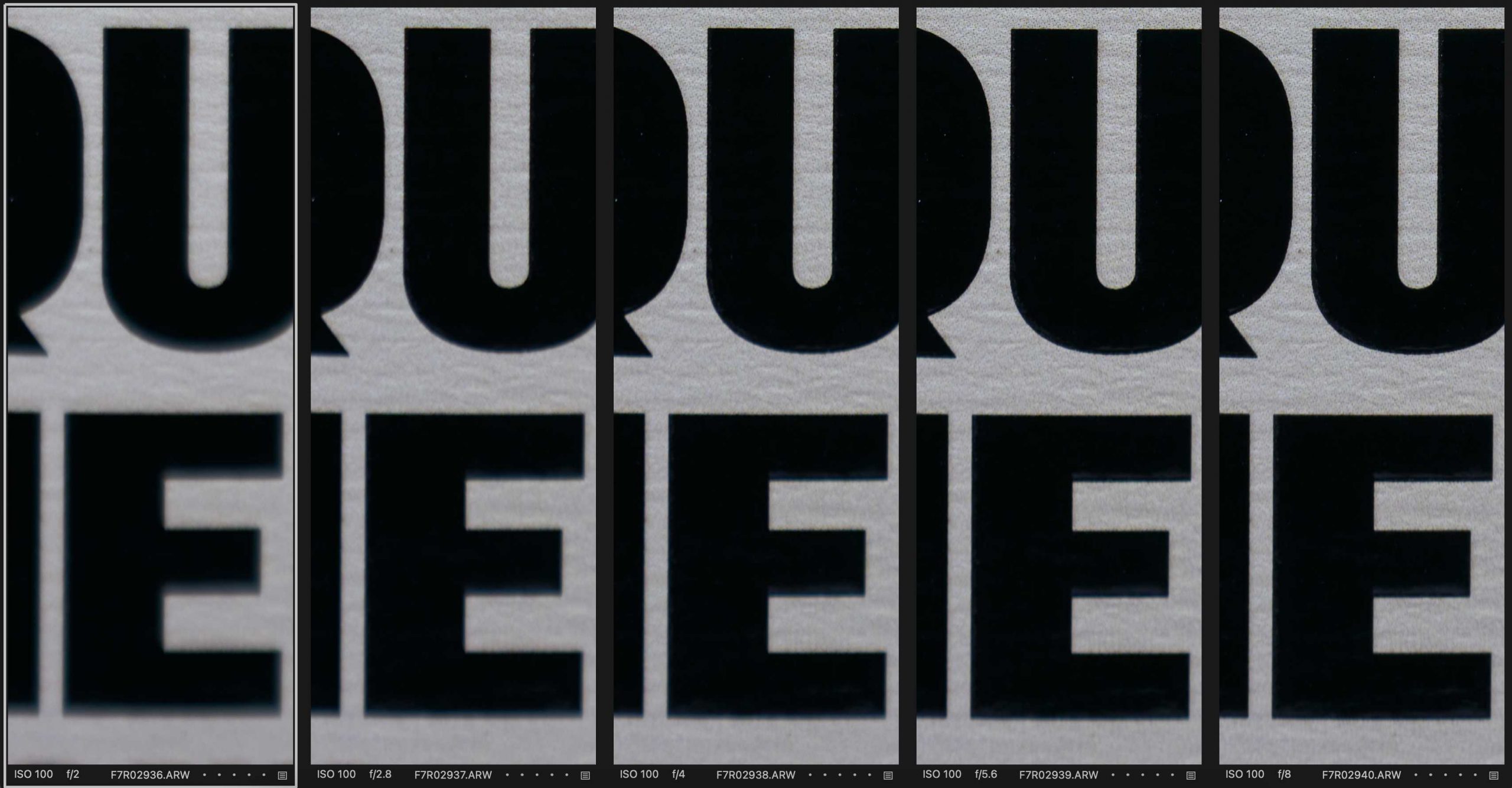
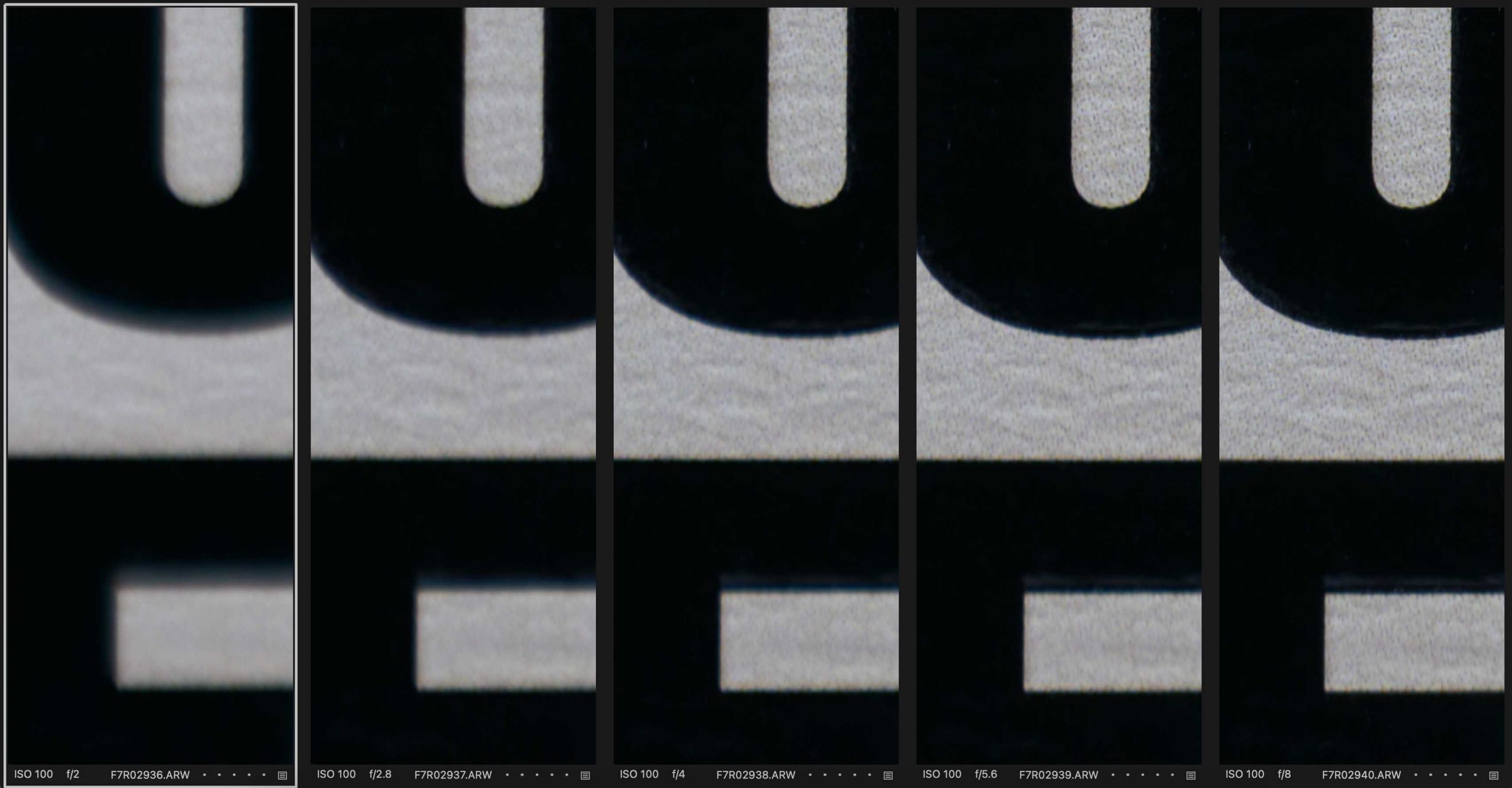
Overall, the 35MM Sigmacron is a good performer given its size and weight. I’d suggest using the lens at F5.6 or F8 for critical work and at F2 for casual fun images. If being able to take perfect images in low light is a priority, the Sony 35MM F1.4 G-Master would be a better choice, albeit at much higher cost, size and weight.
Bokeh
Just like its younger 50MM sibling, the 35MM Sigmacron has pretty good bokeh. There are the expected cats’ eyes in the corners, which are unavoidable given the wide aperture and small dimensions of the lens. There’s also some outlining to the bokeh balls with slight onion ring effect within the balls.
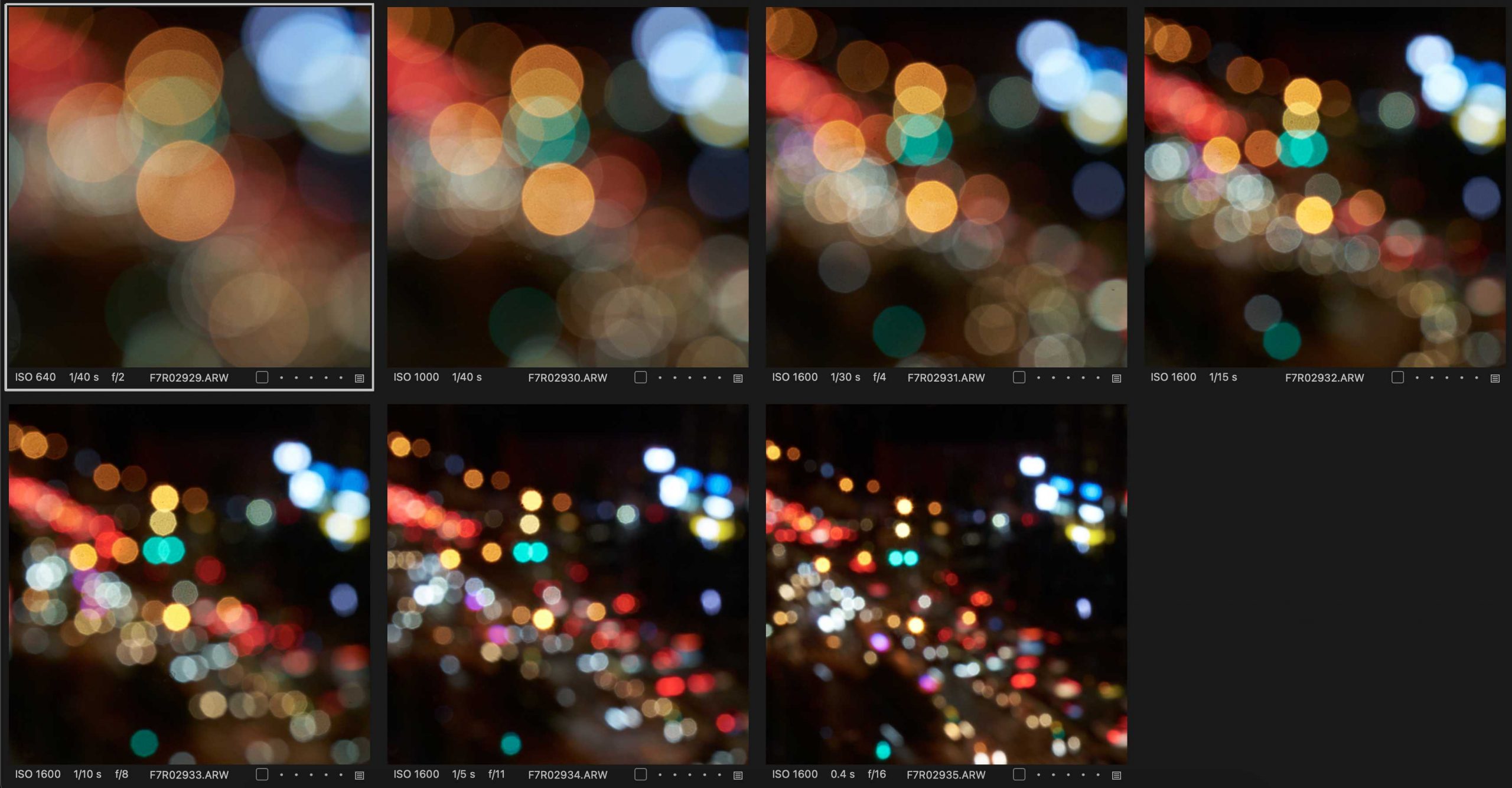
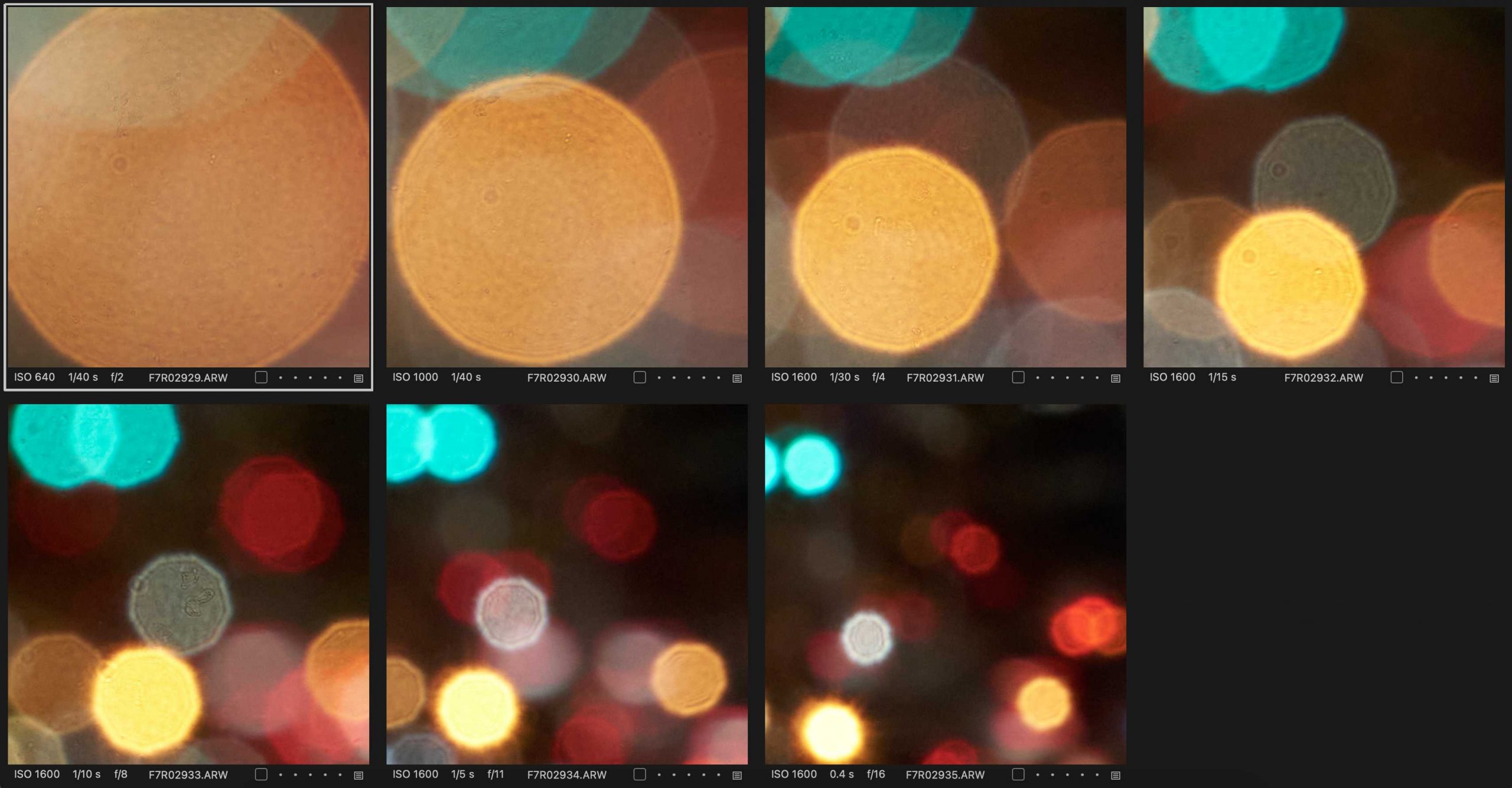
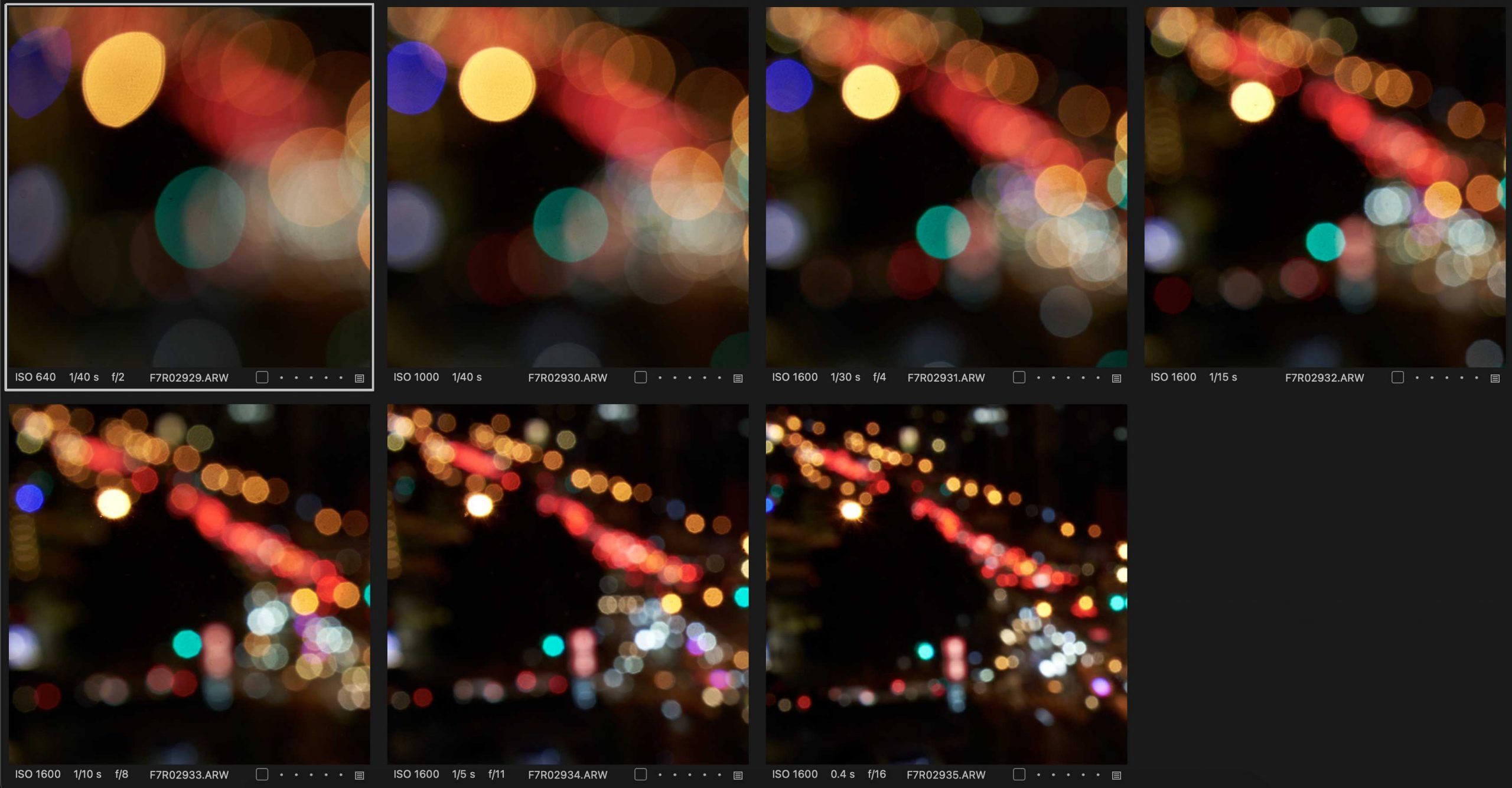
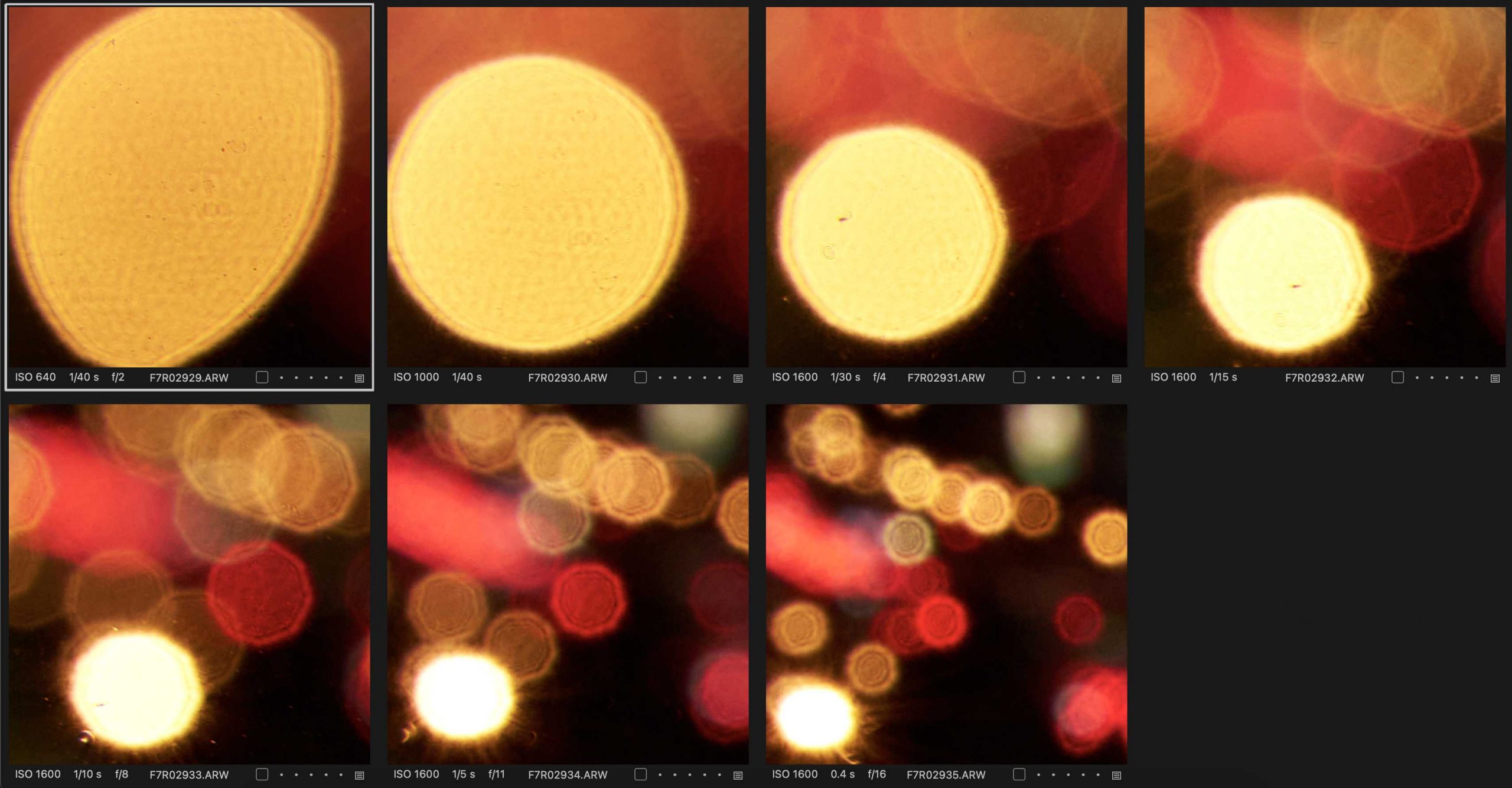
The shape of the bokeh balls is nice and round from F2 to F4. At F5.6 and beyond, you can start to see the effects of the aperture blades. However, even with challenging backgrounds like blades of grass or vegetation, the lens produces pleasing bokeh. I can’t recall seeing any nervous bokeh in all the images I’ve taken with this lens.
AF performance
Given its diminutive size, I expected autofocus (AF) performance to be on the slower side, however that’s not the case at all. The 35MM Sigmacron, like its 50MM sibling, was able to nail focus nearly 100% of the time, regardless of the situation.
It was easily able to lock focus on moving subjects such as humans and animals. The AF is sticky and was able to track them with no issues. In both still image and video modes, there was no noticeable noise from the AF motors. You can lift the camera, point at a moving subject, and like magic, the A7R5 and 35MM Sigmacron will acquire perfect focus.

I’m not a video person, so I don’t test focus breathing, but I did check for any extreme focus breathing. Compared to its 50MM sibling, the 35MM is much better. There’s still some focus breathing, but not that noticeable if working within a reasonable focus range.
Value for money
This, along with higher than desired aberrations, are perhaps the only negatives of the 35MM Sigmacron. That metal build construction and beautifully weighted controls come at a cost. Some may find this price too high for an F2 35MM lens. However. for those in the Leica or Fujifilm worlds, the 35MM Sigmacron’s MSRP of US$639 is rather reasonable.
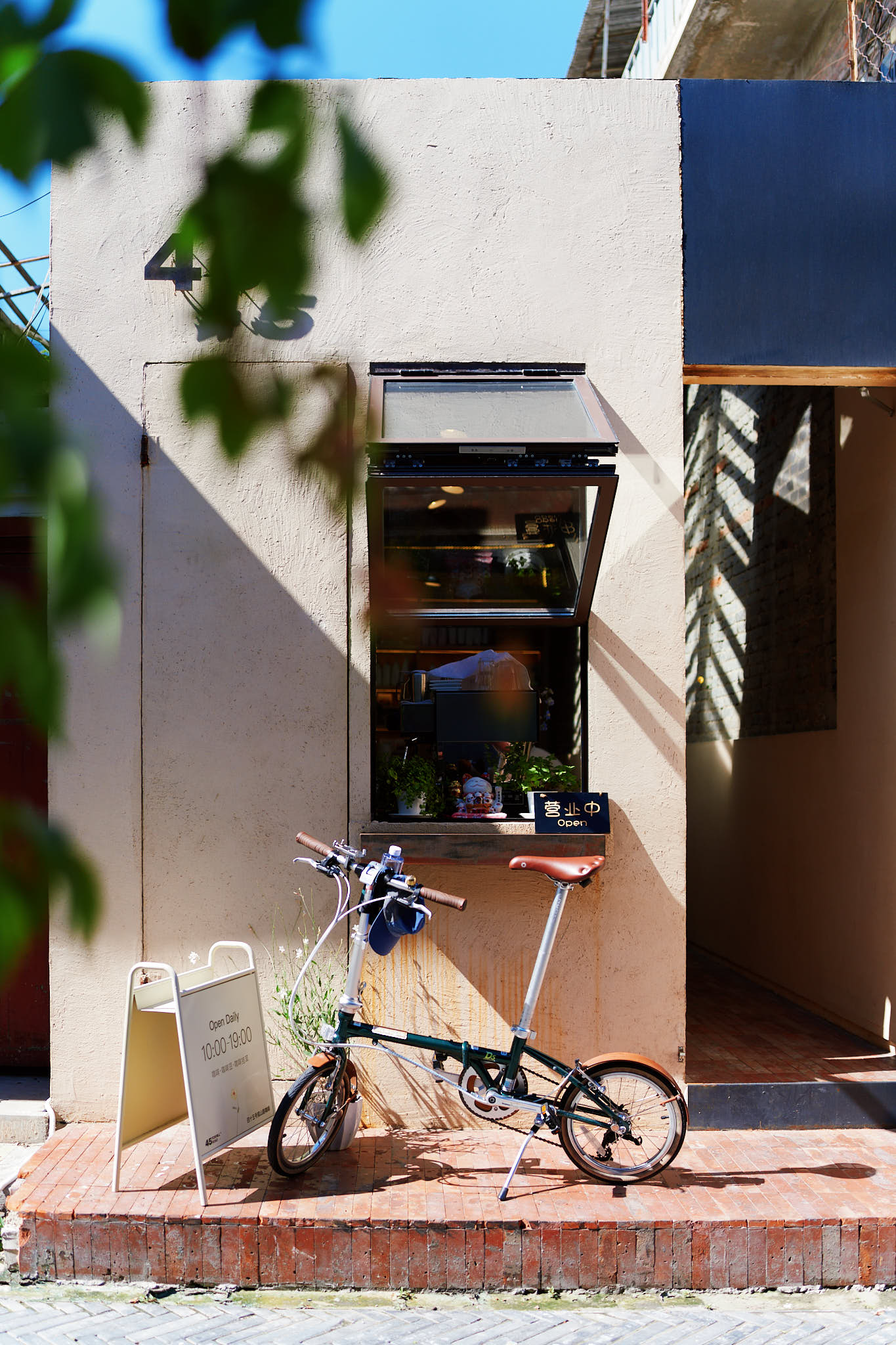
For comparison’s sake, the Leica 35MM Summicron is now US$3,895 and the Fujinon XF23WR is US$899. Given its modern optics, excellent metal construction and build quality, beautifully implemented aperture ring, and fast AF performance, I actually think the 35MM Sigmacron (just as with the 50MM version) is ideally priced.
Conclusion
It wasn’t easy to write this review because I had to rewrite most of the first draft. The very first image I took was in the evening hours and showed the issues with edge sharpness and purple fringing at F2. I was determined to write a quick review and then return the lens as I demand near perfection in my lenses (one of the main reasons I have a GFX).
However, with time and a lot of use, I found myself often reaching for this lens when I took the Sony out. The A7R5 fits very neatly into a small sling bag with the two Sigmacrons in it. The combination is lightweight and includes two excellent primes covering 35MM and 50MM focal lengths, while delivering 61MP.
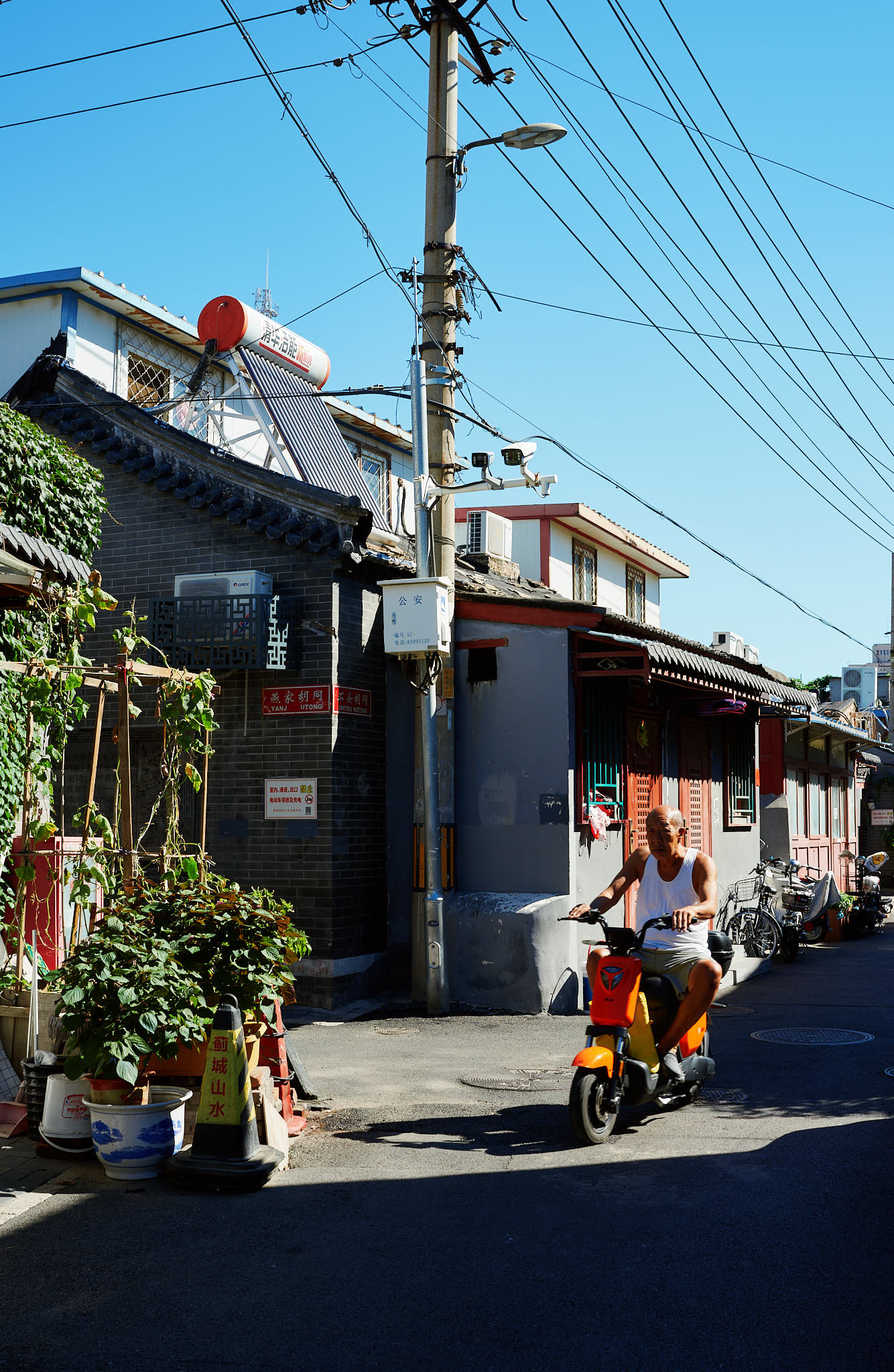
With the 50MM Sigmacron, it was easy to make it a highly recommended purchase. It really has minimal downsides. The 35MM Sigmacron won’t achieve the same accolade. It’s perhaps a “recommended” purchase, with some caveats.
If you’re a landscape shooter that needs wider apertures, this lens is not for you. If you have the means to afford a more expensive lens, the Sony 35MM F1.4 G-Master is not that much bigger (30MM longer) or heavier (200g heavier), but the image quality is superlative.
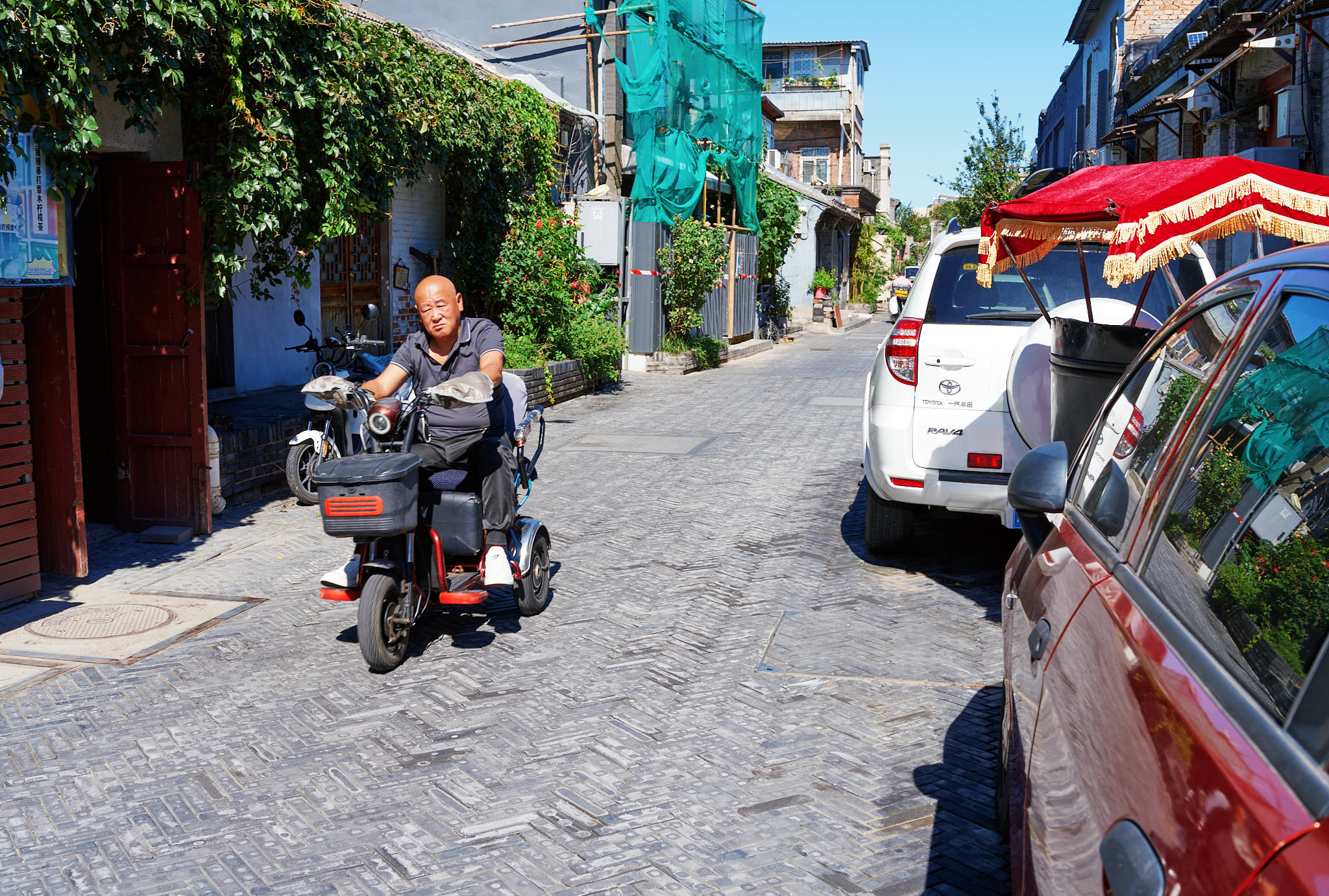
If you’re someone that wants portability, excellent controls interface, beautiful build quality, and are willing to operate in the lens’ sweet spot of F5.6 to F8 or are more focused on the centre of the image wide open, you’ll be very satisfied with this lens.
Therefore, with the caveats noted above, while I can’t say it’s highly recommended, I think this lens has earned its place on my shelf (actually, it’s almost always been on the camera and has rarely sat on the shelf).
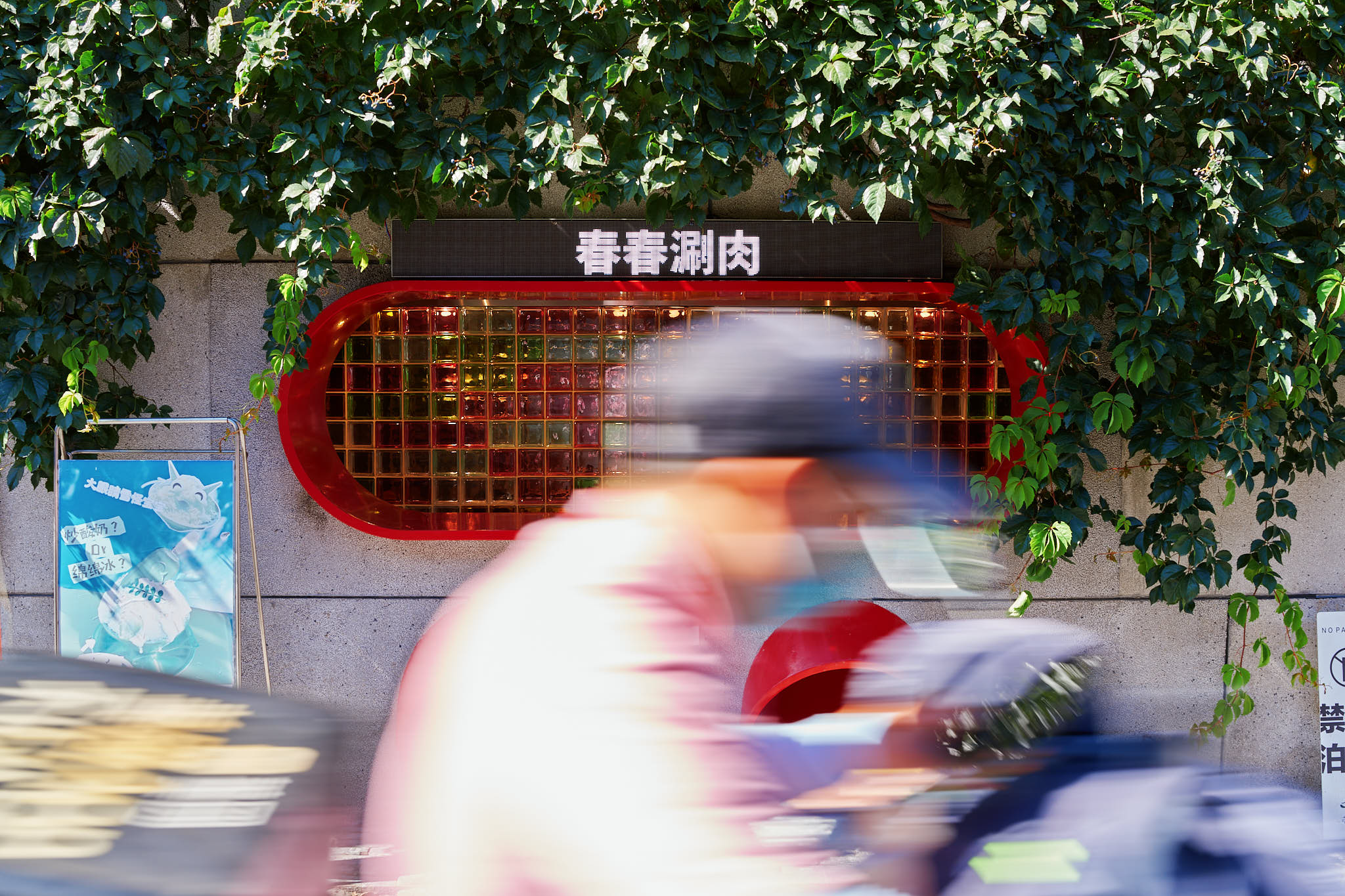
The small size makes a big difference, but for a bit more money, weight and size, if you can afford it, I’d recommend going for the Sony 35MM F1.4 G-Master. You’ll get an extra stop of light gathering, razor sharp corners, and minimal aberrations. That GM lens is spectacular!
Discover more from fcracer - Travel & Photography
Subscribe to get the latest posts sent to your email.
Awesome write up and blog. I skipped this lens as I have the 35mm GM, enough said! The GM is small enough to travel with too. I chose the Sigma 65mm f2 as a companion lens for travel. It’s superlative! I see you went 50mm instead, a fine choice too.
I have a review in my backlog for the 35MM GM, but as you noted, there isn’t much to say about it because it’s basically perfect.
Great review. I’m also looking for the best, but I’ve bought this 35mm for a a7cR as a family/travel camera along with the 20mm dg dn lens, I also reach for the GFX for worthy work . I think it probably is at its best on an a7c variant.
Hi Jonathan, thanks for writing in. Indeed, the Sigmacrons would make a great match for the A7C series of cameras. I’ve really enjoyed using the 50MM especially; it’s such a fantastic lens in a small package.